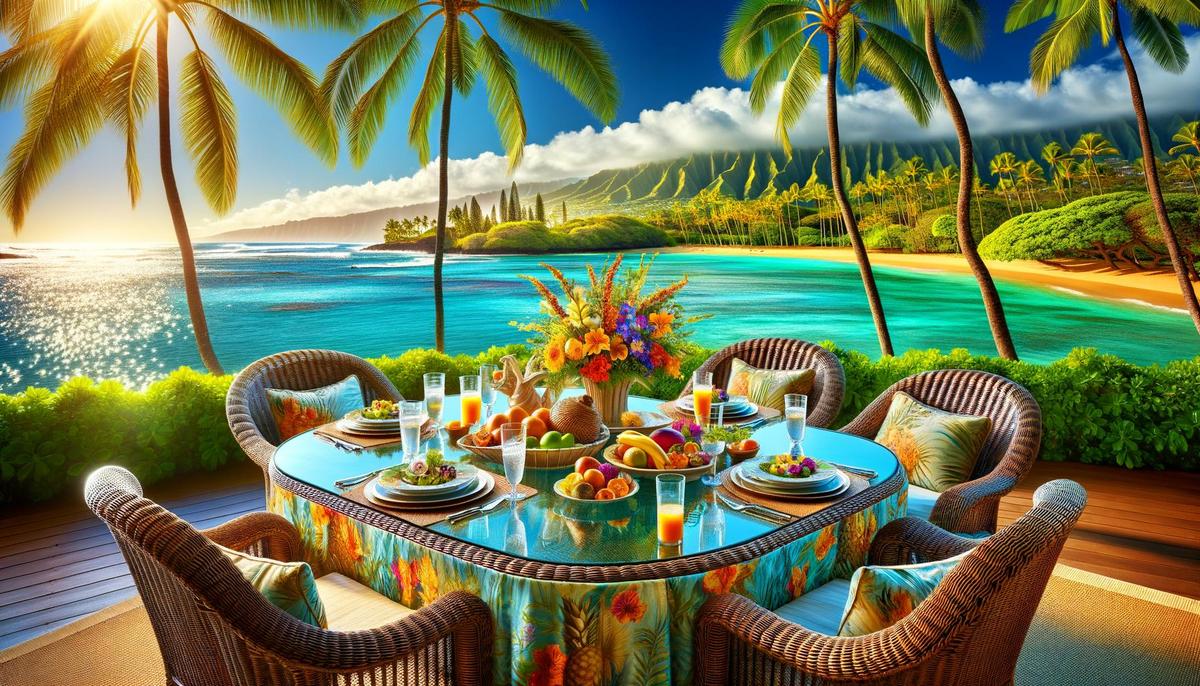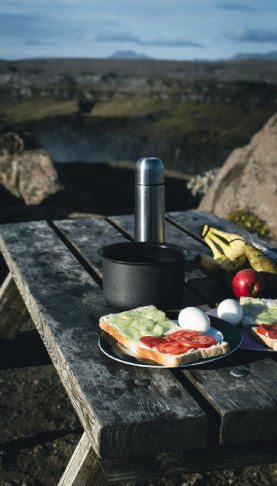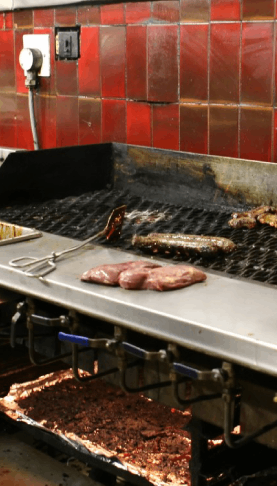You can change your outdoor dining by focusing on five things that work in Honolulu weather: layout, shade, airflow, plant choices, and materials that handle salt and sun. If you want landscapers Oahu that supports cooking and service flow, plant for taste, plan for trade winds, and pick surfaces that clean fast without getting slippery.
Design for eating first, then for looks
Most yards and patios are planned around looks. That misses the point for people who cook or run a restaurant. The meal is the center. The space should help you prep, plate, and serve with less stress. It can still look great. It just needs to work great first.
If a guest can reach their seat easily, see their food clearly, and feel comfortable within five minutes, they will likely stay longer and order more.
Here is what that means in practice.
– Define the eating experience you want. Fast plates and casual? Long tasting menu? Family style?
– Build zones around that goal. Prep, cook, plate, carry, sit, and clear.
– Make every move short and safe. No tight turns with hot plates. No cords underfoot.
– Choose plants that add flavor and shade without blocking service.
– Keep cleaning simple. One rinse. One wipe. Back to ready.
I like pretty gardens as much as anyone. I just think the plate should be the hero. If you run a cafe or a bistro, this is not theory. It protects margins.
Set a clear outcome for your space
Different goals change the plan. Pick one main outcome so you can decide fast when tradeoffs pop up.
For home cooks
– Host six to eight people for dinner twice a month
– Keep the grill within 8 to 12 feet of the prep counter
– Grow herbs and a few compact fruit trees that you actually use
– Store tools outside so you are not walking back and forth
For restaurants
– Add 6 to 12 seats you can fill most days
– Maintain server clearances of at least 36 inches on main paths
– Shorten tray travel from kitchen door to farthest table
– Place POS and water station so two staff can work without conflict
– Control lighting so plates photograph well at night
If you cannot say how many seats you want to add and how fast you want tables to turn, you are decorating, not designing.
I know that sounds blunt. It helps avoid costly mistakes.
Read your site like a pro
Honolulu brings warmth, sun, and trade winds. Also salt air, sudden showers, and microclimates. A quick site read saves you from buying the wrong stuff.
– Sun path: Track where sun hits from 4 pm to 7 pm. That slot decides shade needs for dinner.
– Wind: Note trade wind direction on four different days. Mark gust corridors near buildings.
– Salt: Check how close you are to the ocean. Hardware and fabrics need higher corrosion resistance near the coast.
– Water: See where puddles form after rain. Fix drainage before laying furniture.
– Noise: Note road or neighbor noise. Plant screens or a soft water feature can help.
If this feels like extra work, I get it. Still worth it. I once skipped a 4 pm sun check on a client patio. We spent money on the wrong umbrella sizes. Not fun.
Layout that makes serving easier
Draw your space with zones. It sounds basic. It works.
The six core zones
– Prep: Counter space near the kitchen or outdoor sink
– Cook: Grill, smoker, pizza oven, or induction cart
– Plate: A clean surface for finishing and garnishes
– Route: A straight path from plate to table
– Sit: Table and chairs placed to see food and faces
– Clear: A bus tub station that guests do not see
You can compress zones in a small area. Just keep a clear route.
Spacing rules that keep plates moving
– 36 inches on main walkways
– 18 to 24 inches between chair backs in use
– 24 inches per seated guest at a rectangular table
– Round tables seat more in tight corners
– Keep the grill at least 10 feet from seating to reduce smoke drift
If someone must twist their body to pass a chair with a hot plate, the layout is wrong. Change it on paper before you buy anything.
Shade, airflow, and rain cover that hold up
Shade is not just comfort. It protects food quality and keeps people at the table. In Honolulu, the wind rating matters. So does fabric quality.
Common shade options compared
| Option | Wind handling | Rain performance | Maintenance | Best use | Notes |
|---|---|---|---|---|---|
| Market umbrellas with weighted bases | Fair if closed during gusts | Good with tilt for drizzle | Wash fabric, check fittings | Home patios, flexible layouts | Pick aluminum or marine-grade fittings near coast |
| Cantilever umbrellas | Fair to good with proper base | Good | More moving parts to inspect | Restaurants needing overhead shade | Rotate and lock before closing time |
| Shade sails | Good when tensioned | Fair, depends on slope | Seasonal tension checks | Larger areas with few posts | Use stainless hardware to avoid rust |
| Pergolas with slats | Good | Fair unless louvered | Annual sealing or wash | Long-term restaurant buildouts | Louvered roofs can shed rain at a higher cost |
| Retractable awnings | Fair, retract during high wind | Good | Motor service and fabric care | Home balconies and narrow patios | Add wind sensors to auto-retract |
– Keep shade adjustable. Afternoon sun shifts fast.
– Anchor into proper footings or framing. Do not trust small bases in gusts.
– Choose light-colored fabrics to reduce heat gain.
– Add soft side screens only where wind funnels. Leave openings for air.
I like green shade from trees. It feels cooler. But young trees take time. A mix of fast shade and long-term planting is a smart path.
Plants that support cooking
Grow what you cook with. Sounds obvious, still skipped in many yards. Honolulu has a long warm season. You can pick from a strong list of herbs, fruit, and greens that handle heat and humidity.
Edible plants that earn their space
– Basil and Thai basil for salads and pestos
– Shiso for garnishes
– Lemongrass for marinades and tea
– Chili peppers for heat and pickling
– Kafir lime leaves for aroma
– Calamansi for drinks and dressings
– Lilikoi on trellis for shade and dessert sauces
– Papaya for breakfast plates and chutney
– Taro in wet pots for chips and poi
– Mint in containers to control spread
– Okinawan spinach as a hardy green
– Green onions for constant garnish
Simple spacing and harvest notes
– Keep herbs within 10 steps of the cook area
– Plant citrus where they get at least 6 hours of sun
– Train vines on trellis panels to form living screens
– Use containers for mint and basil so you can rotate near prep zones
– Stagger plantings every 3 to 4 weeks for steady harvest
If you cannot reach herbs during service without breaking your stride, they are too far away.
Scent around the table
Fragrance is pleasant until it clashes with food. Strong jasmine right behind a table can compete with a delicate fish. Keep strong scents away from plates. I like to place them along the route to add a nice moment without affecting taste.
Salt and wind tolerant picks
– Naupaka for coastal screens
– Beach vitex with care for spread control
– Dwarf schefflera for tough hedging away from plates
– Bougainvillea in contained spots for color
– Plumeria upwind of seating for seasonal blooms
Keep thorny plants away from service paths. Sounds obvious. Gets missed.
Irrigation that does not soak chairs
Water plants, not guests. Microdrip and simple timers reduce waste and mess.
– Use drip lines under mulch around shrubs and trees
– Place button emitters for containers
– Set timers for early morning to avoid fungus
– Add a rain sensor to pause cycles after showers
– Keep a quick-connect hose near the prep zone for washdowns
One more thing. Do not aim spray heads at tables. I have seen this ruin a lunch rush.
Surfaces that clean fast and keep grip
Food falls. Sauces spill. Grease happens. Pick materials that resist staining and give traction when wet.
| Surface | Slip resistance wet | Stain resistance | Salt resistance | Cleaning | Notes |
|---|---|---|---|---|---|
| Porcelain pavers | High with textured finish | High | High | Mop or rinse, light detergent | Great near cooking zones |
| Sealed concrete | Medium to high with grit additive | Medium after sealing | High | Rinse, neutral cleaner | Re-seal every 2 to 3 years |
| Composite decking | Medium with grooved boards | Medium | High | Soap and soft brush | Watch grease near grills |
| Natural stone | Varies, often medium | Low to medium | Medium | Stone-safe cleaner | Pick denser stones and seal well |
| Outdoor tile with high DCOF | High | High | High | Rinse, mild cleaner | Check slip rating before you buy |
– Keep grout lines narrow in dining areas
– Slope floors 1 to 2 percent away from tables and doors
– Roll out a grease mat near grills
– Put felt or rubber pads under chair legs to avoid scratches
Lighting that makes food look good
Good lighting sells plates. It also sets the mood. You do not need complex systems to get it right.
Three layers to cover
– Ambient: soft overhead or string lights at 2700 to 3000K
– Task: brighter light at the grill and plating counter
– Accent: small lights on plants or art, not into eyes
Tips that help:
– Choose bulbs with CRI 90 or higher so colors look true
– Aim for dimmable circuits to adjust through the evening
– Keep string lights tight to avoid sway in wind
– Shield fixtures to prevent glare into neighbor windows
– Use warm light near tables, reserve cooler light for prep
I worked with a small cafe that switched to warmer bulbs and added a dimmer. Same menu. Night photos improved. Drink sales ticked up. Hard to prove cause, but staff also felt calmer during service.
Sound and privacy without heavy walls
You do not need thick walls to get a bit of quiet. Plants, screens, and gentle water can break up noise.
– Plant dense hedges on noise-facing edges
– Use trellis panels with vines near chatter zones
– Add a small recirculating fountain near entry to mask street sound
– Place softer surfaces like outdoor rugs under tables to cut clatter
– Choose chair glides that reduce scraping sounds
People relax when they do not have to raise their voice. Quieter rooms often lead to an extra course or one more drink.
Service flow for restaurants
A small change in flow can save minutes every hour. That adds up during the dinner rush.
Place key stations with intent
– Host stand where guests see tables quickly, not blocking routes
– POS within two steps of the main bus station
– Water and coffee at a counter with two-sided access
– Tray jacks at edges, never in the route
– A clearly marked path from kitchen door to farthest table
Turn time and seat mix
– Mix two-tops and four-tops so you can seat solos and couples fast
– Keep a few small round tables for flexible seating
– Track average turn times by party size
– If a table turns slow, check chair comfort, shade, and noise at that spot
You may find that one corner always lags. Sometimes a simple fan or a small shade fix solves it. Sometimes that corner just becomes the dessert lounge on busy nights. I would rather embrace a quirk than fight it all year.
Outdoor kitchen decisions for home cooks
You do not need a full build to cook outside well.
– A sturdy grill with a reliable thermometer
– A heat-safe landing zone on both sides of the grill
– A covered bin for charcoal or pellets if you use them
– A small fridge for mise and drinks if power is nearby
– A sealed drawer for utensils and towels
– A mobile induction hob for side dishes
If you love pizza, add a compact oven on a cart. Wheels give you flexibility on windy days.
Storage that saves time
Outdoor dining fails when the tools are inside.
– Keep plates, flatware, and napkins in weather-safe cabinets
– Use labeled bins for condiments and sauces
– Hang tongs and brushes on a hook rail near the grill
– Store chair cushions in a deck box with vents
– Add a small caddy for table numbers and check presenters if you run a restaurant
Every extra trip inside costs time and heat. Put tools where you need them, not where you think they look best.
Budget and phasing
You do not need to do everything at once. Spend first where guests feel it most.
Phase 1: The core
– Shade for the table zone
– Comfortable chairs that stack or store well
– Non-slip surface and clean routes
– Herbs and a few reliable fruit plants near the prep zone
– Task lighting at the grill and plating spot
Phase 2: The upgrades
– Overhead structure with power for fans and lights
– Built-in benches with storage
– Louvered roof or retractable awning
– Outdoor fridge and sink
– Smart dimmers for lighting scenes
Phase 3: The polish
– Accent lights on trees or art
– Upgraded furniture fabrics with higher salt resistance
– A small water feature for sound masking
– Seasonal planter rotation with edible flowers
If money is tight, buy fewer quality chairs instead of many cheap ones. People remember comfort long after they forget plant names.
Permits and safety basics
Keep it simple and safe.
– Use GFCI outlets for all exterior power
– Keep open flame away from eaves and fabric
– Provide two clear exit routes from the dining area
– Anchor tall heaters and umbrellas
– Secure gas lines with proper fittings, no trip hazards
– Store propane away from heat sources
I am cautious here because fire and power are not places to learn during service.
Cleaning and care routines
Salt and sun wear things down. A steady routine keeps the space ready.
Weekly
– Rinse surfaces after busy days
– Wipe table tops and chair arms with mild soap
– Check umbrella fabric and locks
– Trim herbs and remove dead leaves
Monthly
– Wash cushion covers if removable
– Inspect lighting connections and tighten as needed
– Deep clean the grill, degrease surfaces
– Reapply sealer to high-use counters if required
Seasonal
– Re-seal concrete or stone as scheduled
– Refresh mulch around plants
– Tighten shade sail hardware
– Check irrigation for clogs and leaks
If you track time, you will see that short, regular care beats big fixes.
Menu ideas that use your garden
Cooking outside is more fun when the menu matches what you grow.
Simple, fast plates
– Grilled mahi with calamansi butter and herb rice
– Shiso and cucumber salad with rice vinegar dressing
– Lemongrass chicken skewers with chili lime dip
– Papaya and mint salad with lime and sea salt
– Lilikoi vinaigrette over mixed greens
Prep tips
– Keep a squeeze bottle of herb oil for fast finish
– Pre-slice citrus and store chilled
– Use a tray system. One for raw. One for cooked. One clean for plating.
– Toast spices ahead and store in airtight jars near the grill
Measure what matters
Even a home cook can track a few numbers. A small restaurant should.
– Added seats and actual average fill rate
– Average turn time for outdoor tables by daypart
– Average check for outdoor vs indoor
– Drink sales per outdoor cover
– Guest comments on comfort, light, and noise
– Number of steps from cook to farthest seat
Small wins stack up. I have seen patios add 10 to 20 percent more covers on fair weather days after adding six to eight well placed seats. That is not a promise. It is a pattern.
Common mistakes and simple fixes
– Chairs too pretty and not comfortable. Test before you buy.
– Plants that shed on plates. Move them upwind or swap them out.
– Lighting that blinds guests. Shield and dim.
– Umbrellas that tip in gusts. Upgrade bases and anchors.
– No place to set a tray near the door. Add a narrow counter.
I make mistakes too. I once put a small fan where it cooled a grill instead of a guest. The cook was not happy. We moved it 3 feet. Problem solved.
A quick planning checklist
- Define the main use: family dinners, brunch service, tasting menu, or mixed
- Map sun, wind, and water on site
- Sketch zones and routes
- Choose shade and seating that fit your plan
- Pick plants you will use in the kitchen
- Set lighting in three layers
- Plan storage and cleaning routines
- Phase spending with the guest in mind
Why local help pays off
A local pro sees patterns fast. They know which fabrics fade slower, which hardware rusts, and how wind funnels between buildings in your area. They also know which plants attract bees at the wrong time and which ones deter pests without harsh sprays.
If you want ideas from a team that works in this climate daily, a Honolulu landscape specialist can save you from trial and error. I like to think I plan well. Local crews still spot details I miss on the first pass.
Small touches that feel big
– Cold water station near the host stand or grill
– Hooks under tables for bags
– Battery candle backups for windy nights
– A small herb scissors at the table for fun garnish moments at home
– QR codes for menus tucked discreetly under table tops for restaurants
– A compact bussing cart that fits your path widths
These are not expensive. They show care. People notice.
Sample day plan for a busy dinner service
90 minutes before open
– Turn on ambient lights and check dimmers
– Wipe tables and set chairs
– Mist plants near entry, not near plates
– Fire up the grill and preheat ovens
– Fill water and coffee stations
30 minutes before open
– Place POS tablets and test connections
– Stock condiments and garnish bins
– Place tray jacks and buss tubs
– Adjust umbrellas or slats for the current sun angle
During service
– Keep the route clear, move any extra chairs aside
– Watch wind shifts and adjust shade
– Wipe minor spills at once to keep traction high
– Refill water station to cut back-of-house trips
After close
– Close and tie umbrellas
– Rinse surfaces
– Empty buss tubs and sanitize
– Turn off non-essential lights and lock cabinets
This looks like a lot written out. In practice, it becomes muscle memory.
Q&A
How many seats can I add to a small patio without it feeling cramped?
Measure your space and keep 36 inches on main routes and at least 18 inches between chair backs. A 10 by 12 foot area often fits one four-top and one two-top with clear paths. If it feels tight, drop one chair rather than squeeze.
What color temperature should I use for outdoor dining lights?
Aim for 2700 to 3000K. Warm light makes food look natural and people look relaxed. Use higher output only for the grill and plating counter.
Which herbs are worth growing if I have room for only four?
Basil, mint, green onions, and chili peppers. They grow fast, you will use them often, and they do well in containers near the prep zone.
Are shade sails better than umbrellas in windy spots?
Often yes if they are properly tensioned and installed with solid anchor points. Umbrellas are flexible and fast to set, but they should be closed in gusts. Sails stay up, spread load, and free up floor space.
How do I keep salt air from ruining metal furniture?
Choose powder-coated aluminum or marine-grade stainless for frames. Rinse monthly. Touch up chips fast so corrosion does not spread. Cover or store during long gaps.
What should I track to see if my outdoor space helps my restaurant?
Track outdoor seat fill rate, turn time, average check, and drink sales per cover. Note comments on comfort and photos posted by guests. Make one change at a time so you can see the effect.
Is a built-in outdoor kitchen worth it?
If you cook outside more than twice a week and you have the budget, yes. You gain speed and storage. If you cook outside once or twice a month, a solid grill, a landing counter, and good lighting cover most needs. I like starting simple, then upgrading after a season of use.
What is one small change that improves almost any patio?
Improve shade at the main table. Even a single well-placed umbrella with a stable base can extend dining time and reduce plate melt, ice melt, and guest fatigue.













